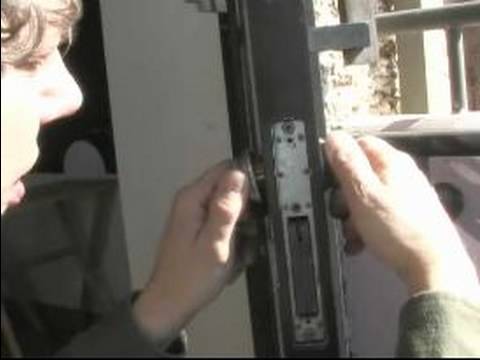Call A Locksmith For Your Patio Door Lock Repair Today
Is it becoming increasingly difficult to turn your key when you insert it into the lock? Do you have trouble sliding the key in and out of the keyhole then the lock most likely requires lubrication. Skilled locksmiths test this theory by trying to turn the key while the door is ajar. If turning the key is still a challenge, this indicates a problem with the lock itself. As time goes by, door locks become congested with dust and dirt particles, which can cause more friction and causing that troublesome, sticky lock. Repairing a sticky lock is a relatively easy job that requires about 10 to 15 minutes of your time. If you can’t fix the door lock yourself; Patio Door Lock Repair Service would help.
Locksmith Recommended Tools
Before you start to fix your door lock that is stuck, be sure to compile notes on the things you’ll need. Gather all of the items prior to starting the job in order to expedite the process. Our locksmith recommends a Phillips head screwdriver, and alcohol, Q-tips and a can of WD-40. Once you are armed with the proper tools, follow the instructions below and you will find the tricks to repair that lock quickly.
Locksmith Steps to Remedy the Sticky Lock
First; use the Phillips head screwdriver to unscrew the entire lock-set and remove it from the door. Two longer length screws usually hold a lock-set in place so it may take multiple turns to remove them. Once the lock-set is free, place the screws to the side and extract the lock-set from the door. Next, our locksmith recommends that you utilize a Q-tip and dip it in the alcohol to sanitize all visible parts of the lock.
Do this as often as needed until the Q-tips are free of residue when you swab them against the lock. Place a minimal amount of rubbing alcohol in the keyhole and allow it to do its job for a moment. Slide your key into the lock and then remove it. Repeat this process about 3 or 4 times to remove any lingering residue from the internal mechanism.
Now it’s time to spray the internal parts of the lock with a fine layer of WD-40. This step provides lubrication for the lock and ensures proper function. Locksmiths use the can straw attachment to spray a small layer of WD-40 in the key hole. Finally, reconnect the lock-set to the door and make sure that screws are tight. Our locksmith tips could help you effectively repair that stuck lock!

Recent Comments